No car owner wants to hear the sound of their head gasket. This unpleasant noise is usually indicative of a blown engine, which, most of the time, means that your car is totaled. So what does this actually sound like? Well, in this article, we have researched what you will hear if your head gasket blows up, so read along.
Blown head gaskets will typically sound like an exhaust leak or air coming out intermittently with a very short gap, kind of like a very heavy and fast exhale. You can only hear this when the engine is on, and this is very common in old cars.
When this happens, your engine will already be noisy, and this could make it challenging for you to hear it. You would have to really pay attention to pick up on the sound, but in some cases, the sound can be very pronounced.
Now you know what a blown head gasket sounds like, but continue reading to learn more details. We will discuss additional questions, such as what causes this, the symptoms leading out a blown head gasket, how to prevent this, and much more. You will also find related posts at the end of this article that will surely be informative and helpful in all your gasket questions. Let's get started.
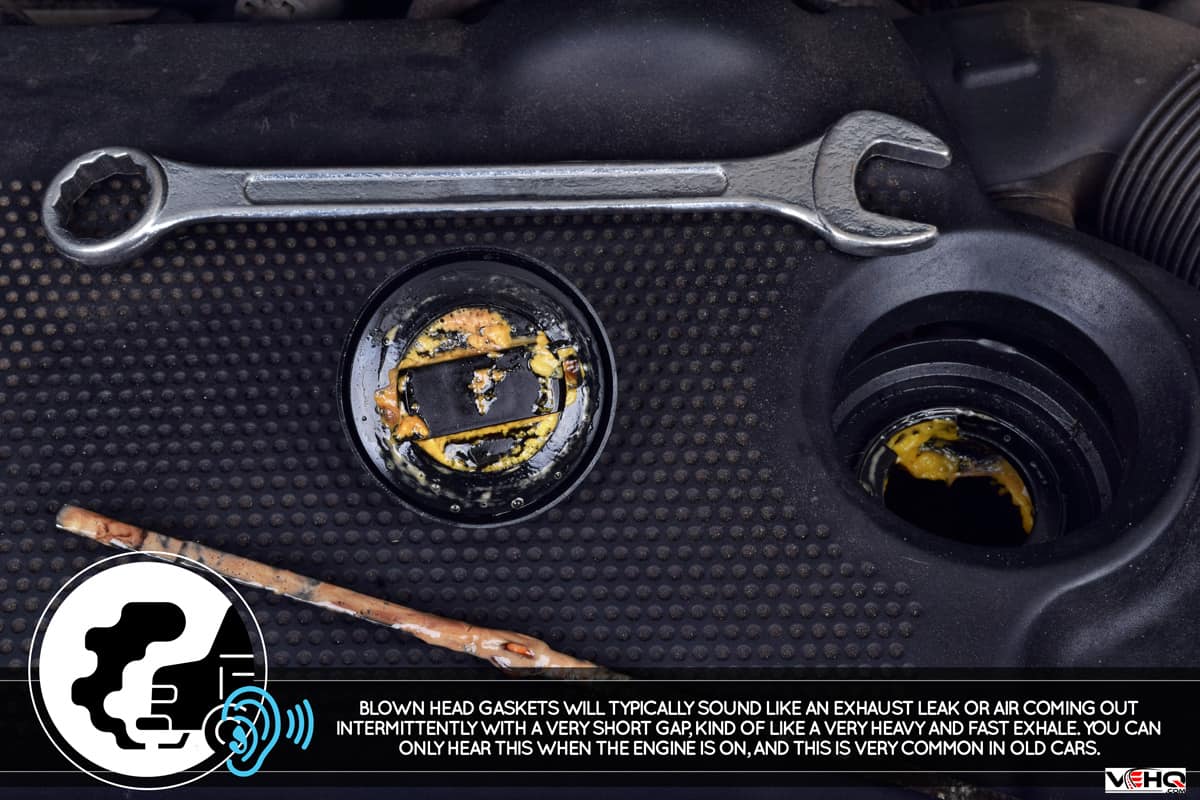
What Causes a Blown Head Gasket? What Does it Sound Like?

The main culprit for a blown head gasket is an abnormal temperature rise your engine reaches, otherwise known as engine overheating. And why do engines overheat? Well, there could be multiple reasons, but the most common one is a malfunctioning cooling system. Either your engine coolant is running low, or you have a leak in your engine coolant reservoir.
A properly functioning vehicle engine can reach temperatures up to 190-220 degrees Fahrenheit. Going over this would usually indicate that you are near overheating. Smoke starts to come out of your engine, and your engine temperature gauge reads hot.
Although this does not necessarily mean that you will immediately blow your head gasket, if your engine temperature is constantly high (near the 220 degrees limit), your gasket can be overheated and may blow.
The fastest indicator of a blown head gasket would be a hissing, intermittent sound, like an exhaust leak. Below is a video showing what a blown head gasket sounds like when the engine is running.
As you noticed, the sound could sometimes be camouflaged behind the engine's sound. This can also be an indicative sign. The engine can become even noisier than normal and produce unnatural sounds, as overheating also affects other parts of the motor, such as hoses, cables, and even the engine block itself.
Your engine expands when heated but retracts when it cools down. This is a property trait of all metals. Your engine is composed of iron-based alloys, such as stainless steel and aluminum alloys. Abnormal and prolonged expansion can cause damage to your engine, such as a blown-up head gasket.
That is why engine coolant is essential. It regulates the combustion temperatures inside your engine by spreading and circulating throughout the engine system, keeping the temperatures at bay with the help of the radiator.
Another reason for engine overheating is engine overload. This is basically pushing the engine to its limit, either by improper RPM or by going over the vehicle's suggested towing and hauling capacity.
Why is it Called a Blown Head Gasket?
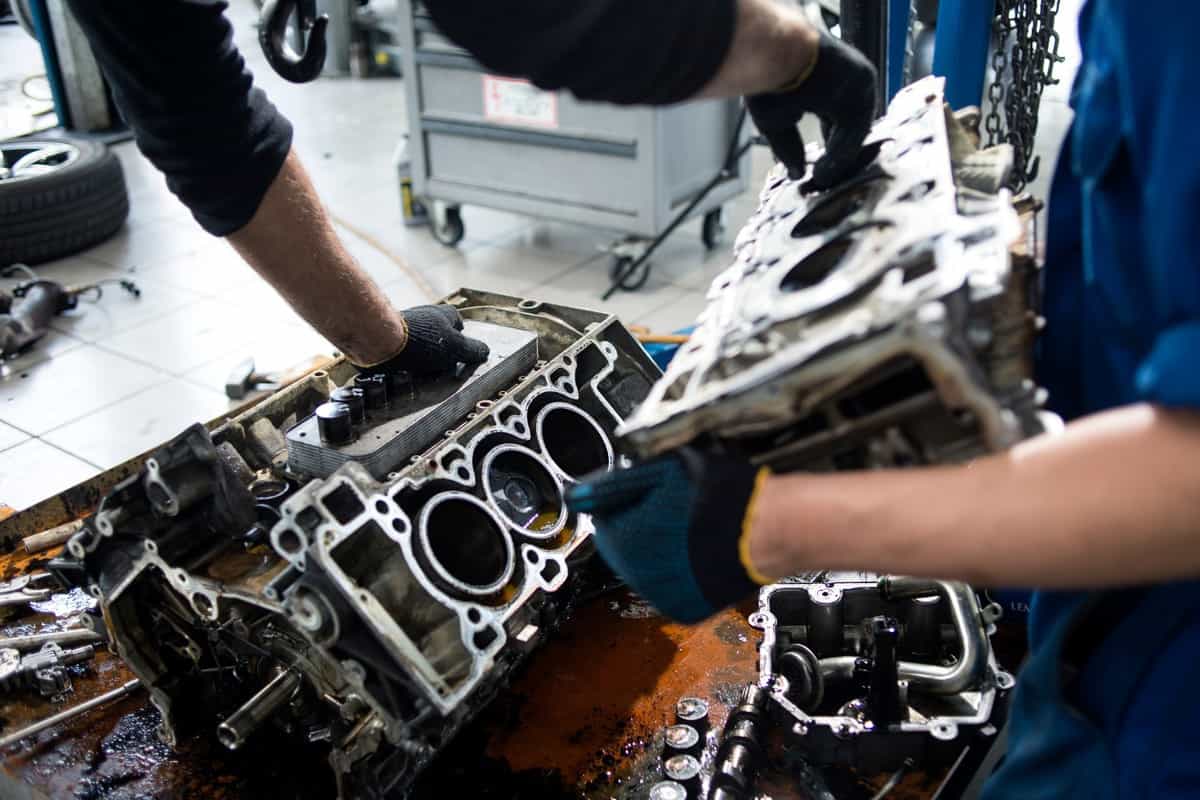
When you say blown head gasket, it doesn't necessarily mean that your gasket has blown up or exploded. It is only a term used as when this happens, the seal between your cylinder head and the engine block has been compromised, "blown open," which causes coolant to leak. This results in reduced engine performance and, eventually, permanent engine damage.
Symptoms of a Blown Head Gasket

In this section, we will discuss what you should be looking for when diagnosing a blown head gasket. These symptoms will either occur one by one or simultaneously. Nonetheless, when you notice this, it could be a possible indication of a blown head gasket.
Engine Keeps Overheating
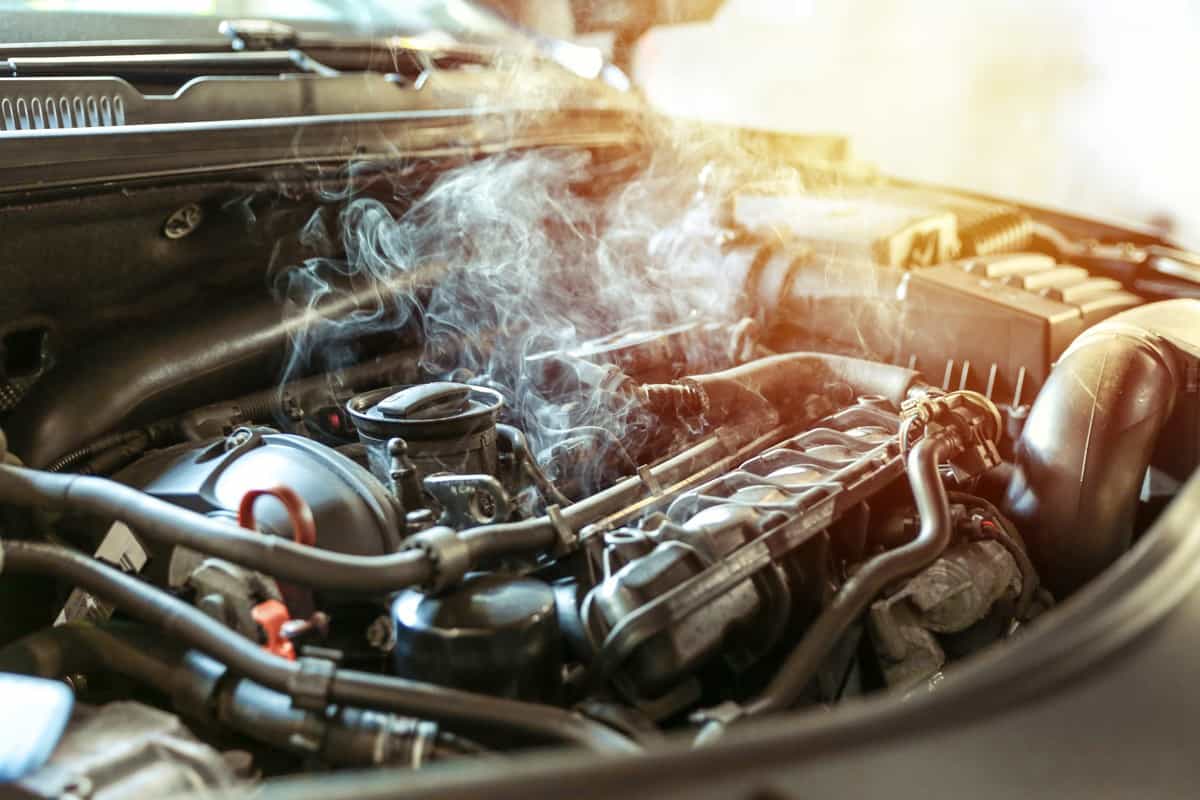
One overheating incident does not mean that your head gasket is blown, but this could potentially trigger it. Suppose you notice that you are starting to experience multiple occasions where your engine keeps on overheating, despite the fact that you have topped off and leveled your coolant. In that case, you could be experiencing a blown head gasket.
A failing head gasket harms the engine's performance by preventing it from getting enough coolant. It makes the engine wear out faster, as constant high temperatures can cause irreversible damage to your engine. This can deform, bend, and even warp some parts of the engine. Once you notice this, immediately have your engine checked out by a certified mechanic.
Low Coolant Levels
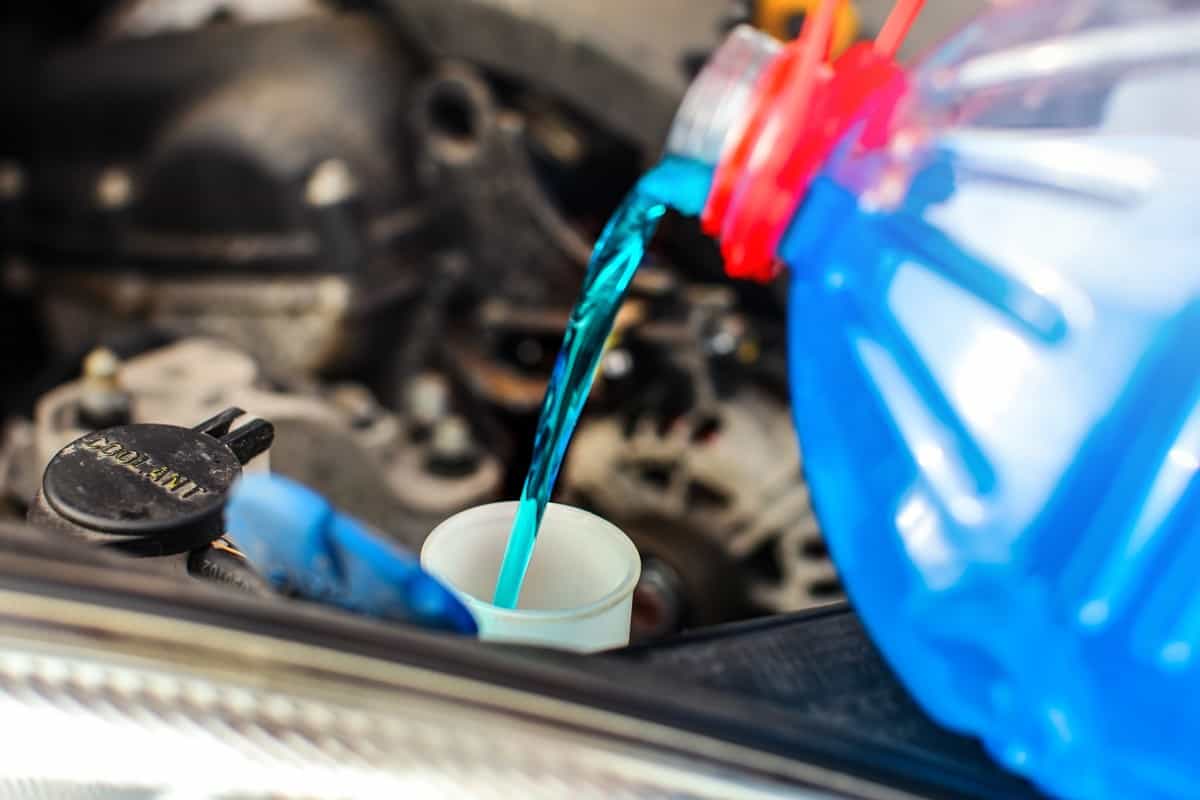
After all, a blown head gasket keeps leaking engine coolant, so a low coolant level is one sure tell-tale sign that you have a blown head gasket, but this isn't a guarantee.
You could have a leak in your radiator or coolant reservoir, which caused the leak. But if left untreated, this would eventually lead to a blown head gasket, which can cause overheating in the engine. That is why consistently checking your oil, water, and coolant levels is essential basic maintenance every car owner should do.
Coolant and Oil Mixing in the Radiator
This is actually one of the most common methods used by mechanics to check if your head gasket is blown without actually taking apart the engine. By using a combustion leak tester kit, you can identify if combustion gas is getting into your radiator, indicating a blown head gasket.
Check this combustion leak tester kit on Amazon
Simply insert the tester kit in your radiator, but make sure to pump a few coolants out, as you do not want them to get into the tester. Leave a little space for the tester kit. The kit comes along with a combustion tester fluid that, if it changes color, would typically indicate a blown head gasket.
Check this video for a more detailed visual tutorial on how to use a combustion leak tester kit:
Radiator bubbles and foamy coolant
Another quick test to see if your head gasket is blown is to check if your coolant starts to bubble when you start the engine. To do this, make sure that the engine is cold.
Open the hood and pop the radiator cover off. Turn on the engine. Observe if the coolant inside the radiator bubbles as the engine runs. If it does, the head gasket's blown. If you also notice that the coolant inside the radiator is starting to become foamy, like a mayonnaise-like consistency, then your head gasket is blown.
White Smoke Coming Out of Exhaust Pipe
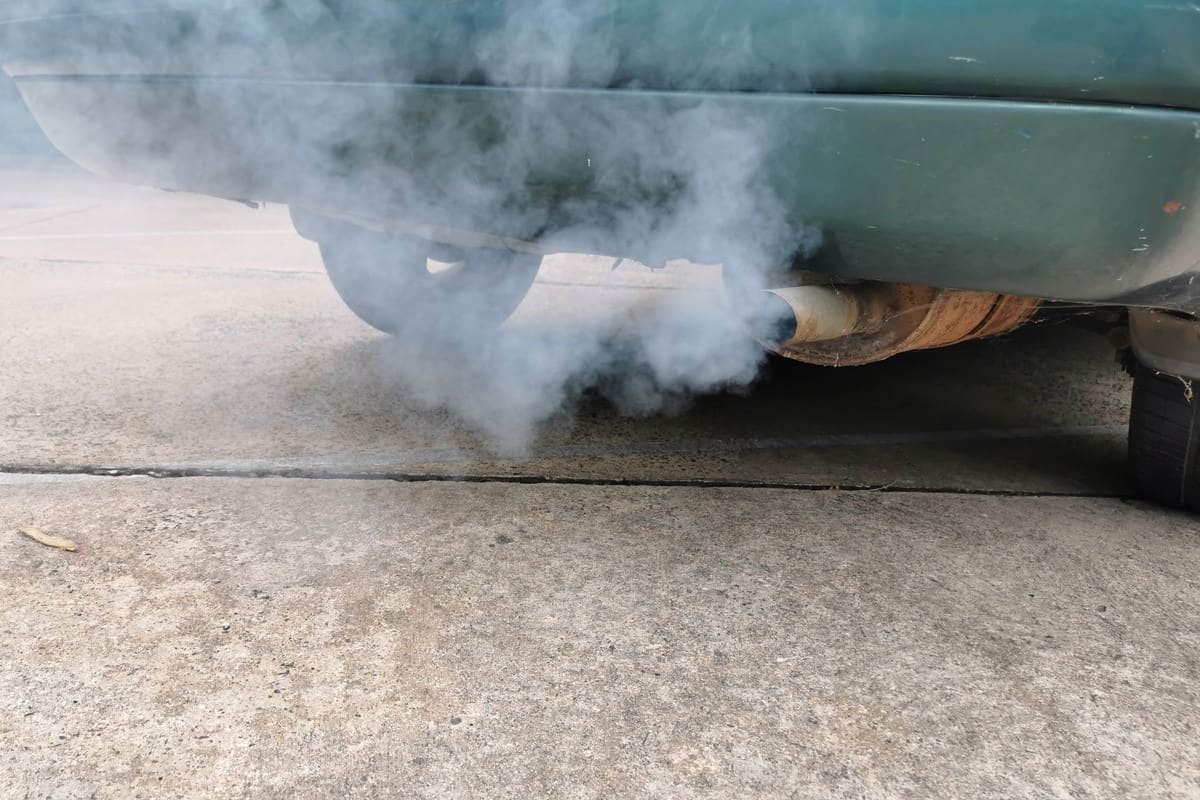
If you notice smoke coming out of your tailpipe, that means coolant is getting inside your exhaust system, and it's not supposed to do that. This could be an indication that your gasket is already looking from being blown.
Call a proper mechanic
Although most of this diagnosis can be done at home, it is still best to have a licensed mechanic diagnose your engine properly. That way, you will get an expert's opinion on what's actually happening and what the next step should be.
You should not also try to make any attempts to fix or disassemble the engine, especially if you do not have prior knowledge and experience, as you may cause even more problems.
Watching a quick YouTube video on this topic cannot replace consulting a proper mechanic to do the check-up and repairs.
Blown head Gasket Repair Costs
Now it's time to have your blown head gasket repaired by a mechanic. The quote for a blown head gasket repair will vary depending on your location, the shop that will be doing it, taxes, and other external factors, such as other problems encountered during the repair.
However, the average cost would typically range anywhere between $1,000-$2,000. This could go higher; rarely, it could be cheaper. You would also need to take into account other parts that might need replacing and the labor that it will require. Head gasket repairs or replacements are time-consuming. It can take anywhere from a few hours to a few days.
Can You Still Drive Even if You Have a Blown Head Gasket?
Yes, you can. But should you? No. This can cause irreparable damage to your engine that would result in you needing a new engine or purchasing a new car entirely
Quick Recap
Blown head gaskets will typically sound like an exhaust pipe leaking, but the leaking does not continue and is often intermittent, with very short intervals between them. You can liken it to heavy exhales with a whistling sound.
Overheating is the main culprit when it comes to causing blown head gaskets. It is also one of the most common symptoms that comes along with it. You should do your best to avoid engine overheating. If you've already experienced this, make sure to have a proper mechanic check your engine.
We hope that we have satisfied your questions about blown head gaskets. Do you have any more vehicle-related concerns? Check out some of our previously written articles below, all about head gaskets!
Valve Cover Gasket Vs Head Gasket: What Are The Main Differences?
How To Fix A Blown Head Gasket Without Replacing It [Step By Step Guide]
Most Common Problems After Head Gasket Replacement – What To Look For?

